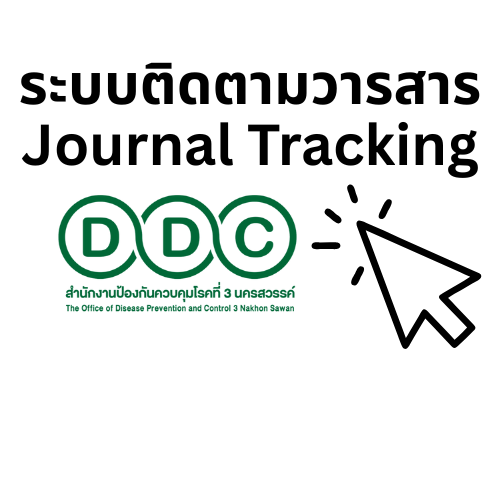Transformational Leadership and Teamwork Affecting Effectiveness of the District Health Board in the Health Area 2
Keywords:
Transformational leadership, Teamwork, Effectiveness, Health area 2Abstract
The purposes of this research are as follows the level, relationships, explain and predict the organizational effectiveness of the District Health Board. The units of analysis were all 47 District Health Board in the Health Area 2 for a total of 376 samples. The research instrument was a 5-point rating scale questionnaire. The content reliability was 0.944. The analysis for frequency, average, standard deviation, and one-sample t-test was done on SPSS for Windows, and the analysis for validity was done on LISREL 8.8.
The results were as follows: 1) the levels of organizational effectiveness, transformational leadership, and Teamwork were between 4.011 and 4.247 which were high in 5-point rating scale. The result was significant at the 0.01 level. 2) Organizational effectiveness, transformational leadership, and Teamwork had pair wise correlation coefficients between 0.51 and 0.73 which were middle. The result was significant at the 0.01 level. 3) Transformational leadership and Teamwork together influenced the effectiveness by 53.60 percents of variance with a significance level of 0.01.
Suggestions from this research: One should emphasize on the leadership development for leaders, such as Chief District Health Boards, so that they have transformational leadership and Teamwork. Moreover, Ministry of Public Health should develop policy guidance for an assessment for transformational leadership and Teamwork in a selection process for those positions.
References
2. Robinson, Robert B. Perceived organizational effectiveness: Degree of consistency in the pattern of expectations. Dissertation Abstracts International – A (Online).
61(06): 2380 Available: Proquest UMI; Dissertation Abstracts. John Wiley & Sons. 2000, December.
3. Shook, John R. Comparative faculty perceptions of organizational effectiveness within various schools of an individual university system. Dissertation Abstracts International - A (online). 61(04); 1248 Available: Proquest UMI; Dissertation Abstracts. 2000, October.
4. House, R. J., & Aditya, R. N. The social scientific study of leadership: quo Vadis. Journal of
Management, 1996.
5. Yukl, G. Leadership in organizations (4th ed.). Englewood Cliffs, NJ: Prentice Hall. 1998.
6. Bass, B. M. Leadership and performance beyond expectations. New York: Free Press. 1985.
7. พิชาย รัตนดิลก ณ ภูเก็ต. องค์การและการบริหารจัดการ. กรุงเทพฯ: ธิงค์ บียอนด์ บุ๊คส์. 2553.
8. Stott, Kenneth & Walker, Allan. Making Management Work. New York: Simon & Schuster Pte Ltd. 1992.
9. ระเบียบสำนักนายกรัฐมนตรีว่าด้วยการพัฒนาคุณภาพชีวิตระดับพื้นที่ พ.ศ.2561. ราชกิจจานุเบกษา:
สำนักนายกรัฐมนตรี กรุงเทพ.
10. Quinn, R. E., & Rohrbaugh, J. ‘A spatial model of effectiveness criteria: Toward a Competing Values Approach to Organizational Analysis’, Management Science. 1983.
11. พงษ์เทพ จันทสุวรรณ. ประสิทธิผลองค์การ: ปฏิบทแห่งมโนทัศน์วารสารร่มพฤกษ์. 28 (3): 2553.
12. Bass, B. M. & Avolio, B. J. Improving organizational effectiveness through transformational
Leadership. Thousand Oaks, CA: Sage. 1997.
13. Byrne, B. M. Structural equation modeling with LISREL, PRELIS and SIMPLIS: basic concepts,
applications and programming. New Jersey: Lawrence Erlbaum. (1998).
14. Schumacker, R. E. & Lomax, R. G. A beginner’s guide to structural equation modeling. 2nd ed. Mahwah, NJ: Lawrence Erlbaum. 2004.
15. บุญชัย ธีระกาญจน์. ภาวะผู้นำการเปลี่ยนแปลงและธรรมาภิบาลที่ส่งผลต่อประสิทธิผลของสำนักงานสาธารณสุขอำเภอ: กรณีศึกษาเขตสุขภาพที่ 3.เอกสารวิชาการ สำนักตรวจราชการและประเมินผล กระทรวงสาธารณสุข. 2558.
16. Dixon, M, A. The relationship between human resource management and organizational
effectiveness in non-profit sport organizations: Multi – level approach. Dissertation Abstracts International,
61, 2002. 4310.
17. พัฒนะ งามสูงเนิน. ภาวะผู้นำ วัฒนธรรมองค์การกับประสิทธิผลองค์การ ของโรงเรียนในสังกัดเขตพื้นที่การศึกษา
ที่ 42. ปรัชญาดุษฎีบัณฑิต สาขาการบริหารการพัฒนาองค์การ บัณฑิตวิทยาลัย มหาวิทยาลัยเจ้าพระยา นครสวรรค์. 2556.
18. Gozubenli, Murat. An investigation of leadership styles in a large American police department: Effects on officers’ extra effort, perceptions of leader effectiveness, and satisfaction with leaders. Spalding University, AAT 3390246, searched from proquest program, 26 December 2010. 2010.
19. คมกฤช จันทร์โอภาส. ปัจจัยที่มีผลต่อประสิทธิภาพการทำงานเป็นทีมของข้าราชการสำนักงานตรวจสอบภายในทหารอากาศ.วิทยานิพนธ์บริหารธุรกิจมหาบัณฑิต สาขาวิชาวิทยาการจัดการ มหาวิทยาลัยสุโขทัยธรรมาธิราช. 2553.
20. Cohen, S. G., Ledford, G .E. and Spreitzer, G.M. Employee involvement; Studies; self directed work
teams; Effectiveness; Models; Teamwork. New York: Sage publication, Inc. 1996.
21. นริศ สวัสดี.การวิเคราะห์พหุระดับของตัวแปรที่มีอิทธิพลต่อประสิทธิผลของโรงเรียน มัธยมศึกษา. ดุษฎี
นิพนธ์ สาขาวิชาการบริหารการศึกษา บัณฑิตวิทยาลัย มหาวิทยาลัยบูรพา. 2550.
22. Bauschka, L. The predictive effects of organizational climate participation in facultydevelopment
programs. Dissertation abstracts international. Vol. 51, No. 1 July 1990: 52
23. เชาว์ เกษมกุล. ปัจจัยที่มีผลต่อการทำงานเป็นทีมของพนักงานบริษัทมาสโปรแอมเทคคอร์ปอเรชั่น จำกัด.วิทยานิพนธ์บริหารธุรกิจมหาบัณฑิต สาขาวิชาวิทยาการจัดการ มหาวิทยาลัยสุโขทัยธรรมาธิราช. 2552.
Downloads
Published
How to Cite
Issue
Section
License

This work is licensed under a Creative Commons Attribution-NonCommercial-NoDerivatives 4.0 International License.
Copyright notice
Article published in the Journal of Disease and Health Risk DPC.3 Nakhon Sawan. It is considered a work of academic research and analysis as well as the personal opinion of the author. It is not the opinion of the Office of Disease Prevention and Control 3, Nakhon Sawan. Or the editorial team in any way Authors are responsible for their articles.
Privacy Policy
Name, address and e-mail address specified in the Journal of Disease and Health Risk DPC.3 Nakhon Sawan. It is used for identification purposes of the journal. And will not be used for any other purpose. Or to another person.









